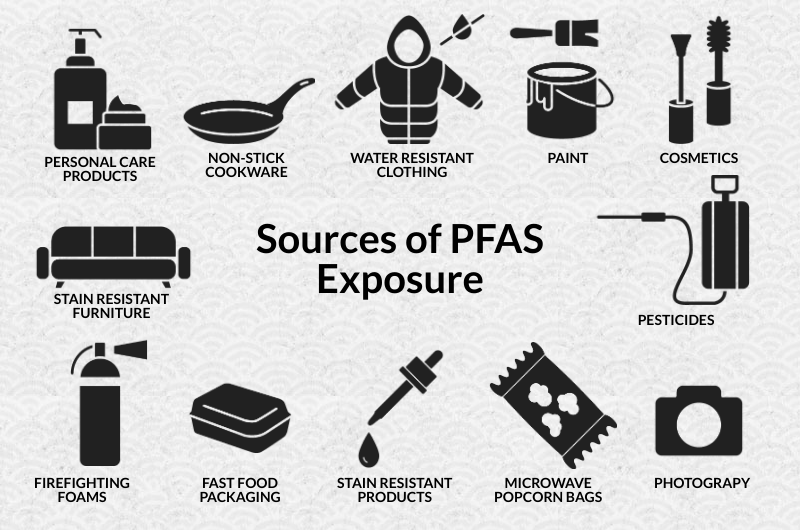
Study by Keck School researchers finds link between ‘forever chemicals’ and changes in glucose metabolism
By Jeremy Deutchman, Keck School News
A new USC study finds that a class of environmental pollutants known as “forever chemicals” may increase the risk of type 2 diabetes in Latino girls. The pollutants, called per- and polyfluoroalkyl substances (PFAS), are a group of man-made chemicals used across the United States in a wide range of industrial and consumer products, including cookware, stain repellant and pizza boxes.

“Because PFAS are in such widespread use and they don’t break down, they have made their way into the drinking water of roughly 200 million Americans,” said researcher Leda Chatzi, MD, PhD, professor of population and public health sciences at the Keck School of Medicine of USC and director of the new USC Center for Translational Research on Environmental Health. “This is the first study to measure their potential impact on glucose metabolism over time among adolescents and young adults.”
The study appears in Environmental Health Perspectives.
Researchers looked more than 310 Latino children between the ages of eight and 13 from SOLAR (Study of Latino Adolescents at Risk of Type 2 Diabetes). Each participant was tested for levels of certain PFAS at the start of the study and then followed for up to 12 years, with annual check-ups on how their bodies metabolized glucose.
PFAS and glucose metabolism
Data from the study showed that, starting in late puberty, girls who had high levels in childhood of a PFAS called perfluorohexane sulfonate (PFHxS) tended to have poorer metabolism of glucose than girls who had low levels of PFHxS as children. The association between high levels of PFHxS and dysregulated glucose metabolism increased after puberty and persisted through 18 years of age. The researchers replicated their findings in a separate group of young adults from the Southern California Children’s Health Study, showing that this link may persist into adulthood.
The study found no consistent association between high levels of PFAS and dysregulated glucose metabolism in boys.
“We saw the biggest changes in glucose metabolism in puberty, and there are lots of differences in puberty between boys and girls,” said Jesse Goodrich, a postdoctoral scholar at the Keck School of Medicine of USC and first author of the study. “One hypothesis is that PFAS may interact with sex hormones. We plan to follow up on this study by examining the biological mechanism behind the association of PFAS with type 2 diabetes.”
Young Latinos at higher risk of type 2 diabetes
Rates of diabetes in Latino children in the U.S. are five times higher than that of non-Hispanic whites; in Latino adults, the rate is 80% higher than that in non-Hispanic whites. Yet diet and lifestyle alone don’t account for the difference.
“Type 2 diabetes is potentially preventable, and one key area of focus should be environmental influences,” said Chatzi. “PFAS exposures are modifiable through individual behaviors, like avoiding non-stick cookware and plastic containers for food storage. But we are not just exposed in one place or one source — PFAS are everywhere. Government can play a major role in regulating the use of PFAS.”
Although certain PFAS chemicals are no longer manufactured in the United States, they are still produced internationally and can be imported into the U.S. in consumer goods such as carpet, leather and apparel, textiles, paper and packaging, coatings, rubber and plastics, according to the Environmental Protection Agency. A few weeks ago, the House passed the PFAS Action Act, which would require the Environmental Protection Agency to establish national drinking water standards for these so-called “forever chemicals.”
About the study
In addition to Chatzi and Goodrich, other authors of the study include Brittney Baumert, Zhangua Chen, Frank Gilliland, Katerina Margetaki, Sarah Rock, Nikos Stratakis and David Conti from USC; Tanya Alderete from the University of Colorado Boulder; Kiros Berhane from Columbia University; Michael Goran from Children’s Hospital, Los Angeles; Xin Hu and Dean Jones from Emory University School of Medicine; Damaskini Valvi and Douglas Walker from Icahn School of Medicine at Mount Sinai.
The study was supported by the National Institute of Environmental Health Sciences (R01-ES029944, T32-ES013678, R00-ES027853, R00-ES027870, R21-ES029328, P30-ES023515, P01-CA196569, P30-ES007048, P30-CA014089, R01-ES030691, R01-ES030364, R21-ES028903, R21-ES029681).